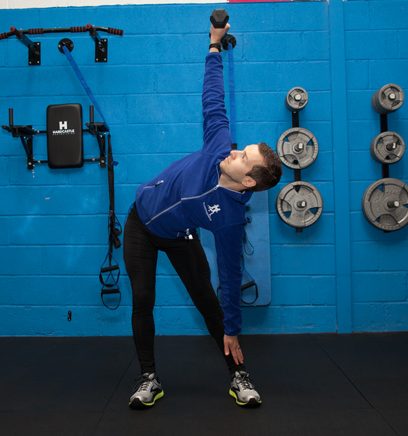Strength training is something I recommend for every runner, no matter their fitness level. It has numerous benefits which I’ve covered in previous blogs. Here we’re going to look at when in your day you should perform strength training and why.
When to strengthen within your week
A large factor in deciding when to work on strength is going to be what the rest of your training week looks like. Naturally you’re going to prioritise runs ahead of strength, and you ideally don’t want it to interfere with the quality of your runs. If you’re just starting to add strength work, or are increasing the amount you’ve been used to doing, some interference is almost unavoidable, but it shouldn’t last long.
My advice would be to do any tougher strength sessions on your non-running days, or on easy run days if you run 5-6 days per week and want to take some days of complete rest. Depending on the time of day you run, you may want to perform non-running day strength workouts earlier in the day to give yourself a bit of extra recovery time. A heavy strength workout in the evening before a morning run wouldn’t be ideal for instance.
When to strengthen on running days
If you’re like me and perform more regular bouts of strength training for shorter periods of time, either for time management or specific fitness needs, then I recommend performing it as early as possible before your run, or later in the day after your run.
It’s true that running before strengthening might compromise your strength training, especially on days you perform interval training or harder tempo sessions, but running is the purpose of the strength training in the first place, so context is key as ever. You can of course mitigate this by using lighter strength training workouts on days you run harder or longer sessions as a way to better manage your training load.
When not to strengthen on running days
If you’re read a few of my blogs you’ll know I rarely dictate any absolutes, but this is an exception to that rule. For amateur athletes, strengthening shortly before a run, or during a running session is not a good idea. There are interval workouts made popular online which include strength work as active rests between running intervals, but for most of us this is at best unhelpful and at worst, asking for an injury.
The idea of strength work within runs is to tire the muscles to simulate running on heavy or tired legs late on in a race, but the science isn’t the same. When your legs are tired and heavy in a race, it’s largely because of a lack of carbohydrate and rise in lactate levels within the muscle, as well as increased blood volume in the muscle itself as your body tries to keep up with oxygen and nutrient demand. During strength training, heavy and tired legs are a combination of muscle damage and neurological factors, meaning you can’t contract the muscles as forcefully.
Running hard on muscles which aren’t being as well controlled by the brain, and which potentially have damage (albeit good damage for strength development) is a recipe for high injury rates and poor running technique. You may gain some mental strength, but the risk of injury doesn’t outweigh the benefits in my view.
My advice for strength training is to keep it as separate from your runs as possible so that both elements can be optimised and your results from the same amount of hard work maximised.
Written by Kyle Brooks, Running Coach based in Norwich, Norfolk

